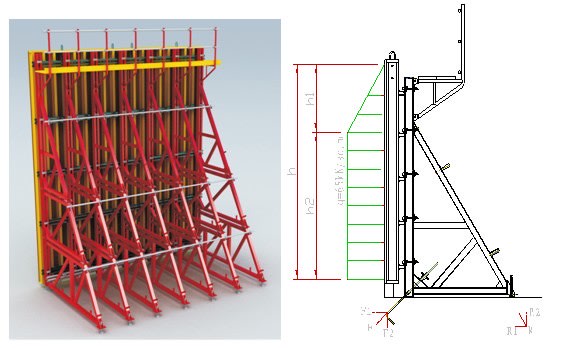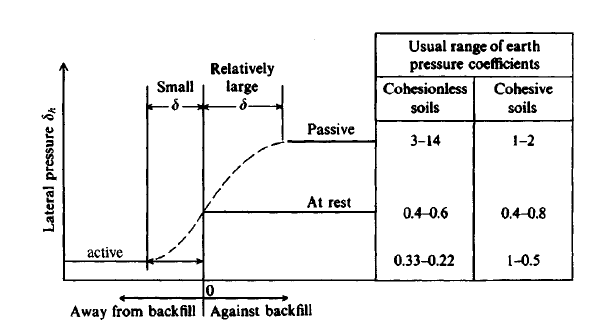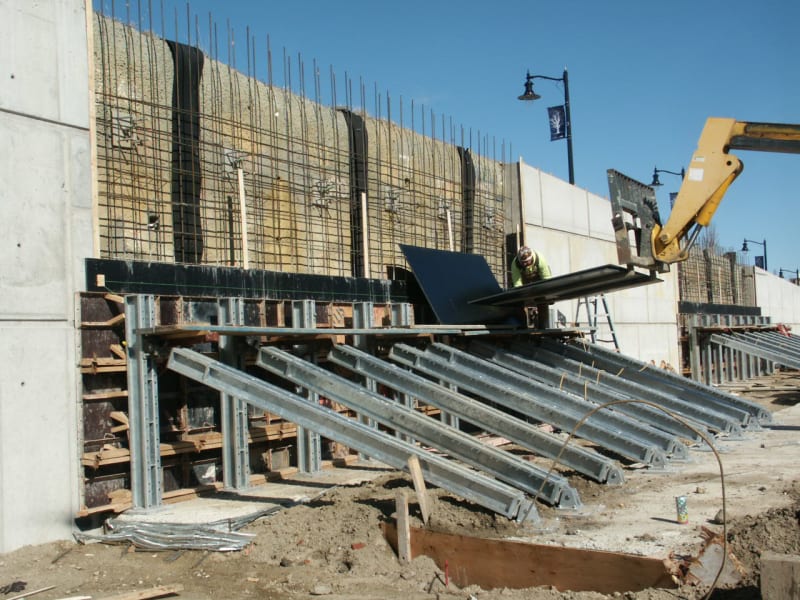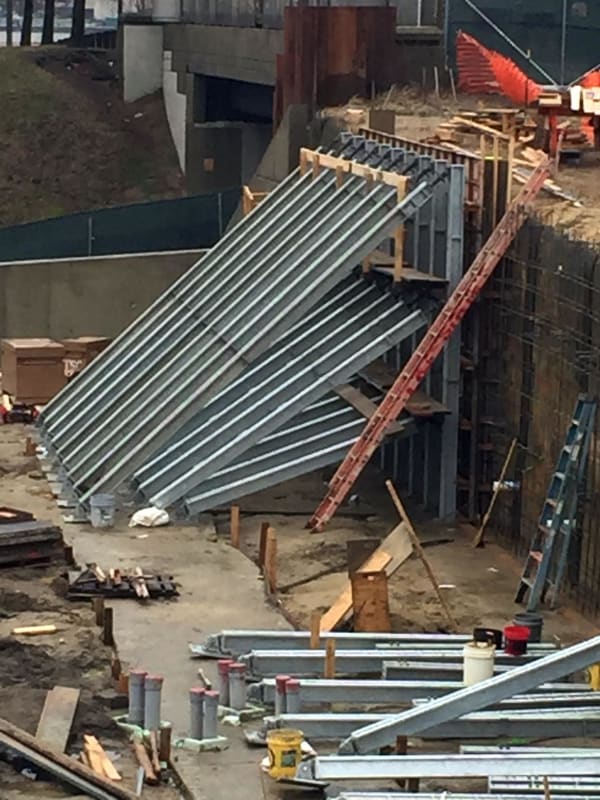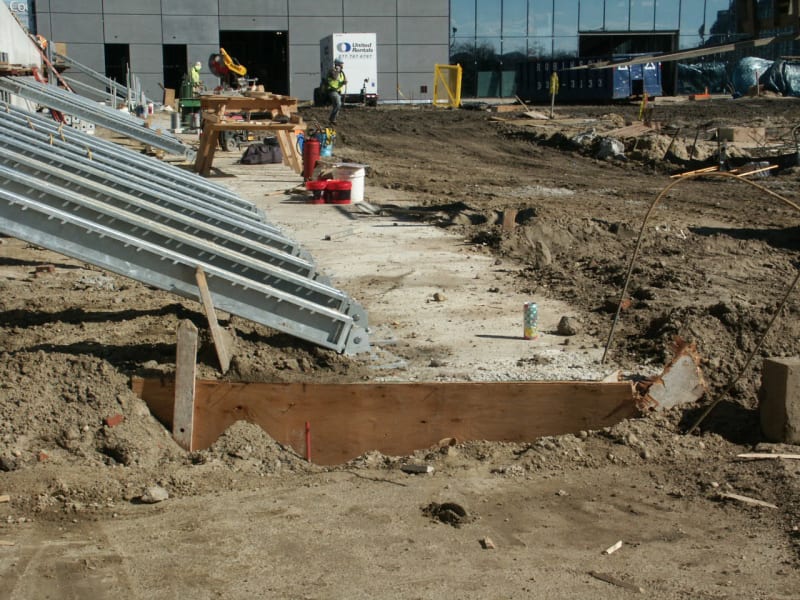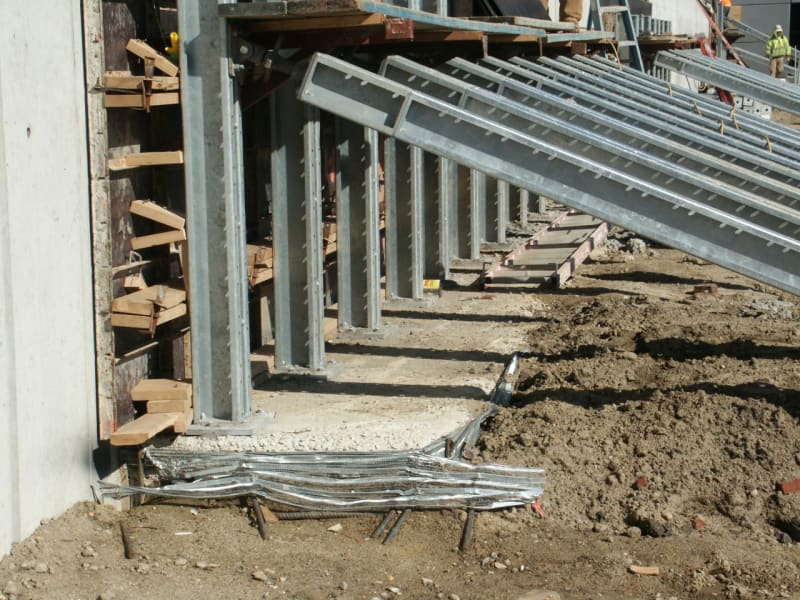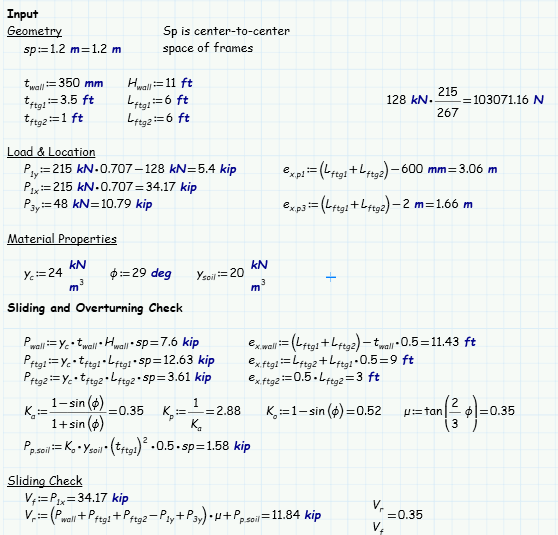
I'm designing a foundation for foundation for one-side-formwork. My problem is that after drawing the free-body-diagram, I am finding that I need a ridiculous sized footing in order to prevent the single side form from sliding.
Based on a 11' tall one-side-formwork, the formwork designer's reactions gave me a net horizontal applied force of 42kip per frame spaced at 4' apart on average. To resist that sliding force I extended the base-building footing to all the way below the far leg of the A-frame (R3y in diagram), so I can get all the downward forces possible x 0.35 for sliding, and got only 9kip of resistance. I then added 3'6" of passive earth pressure, and still only got another 9kip of resisting force. The code need a safety factor of 2, and I'm at 0.5. Am I missing something here?
Thanks all!

